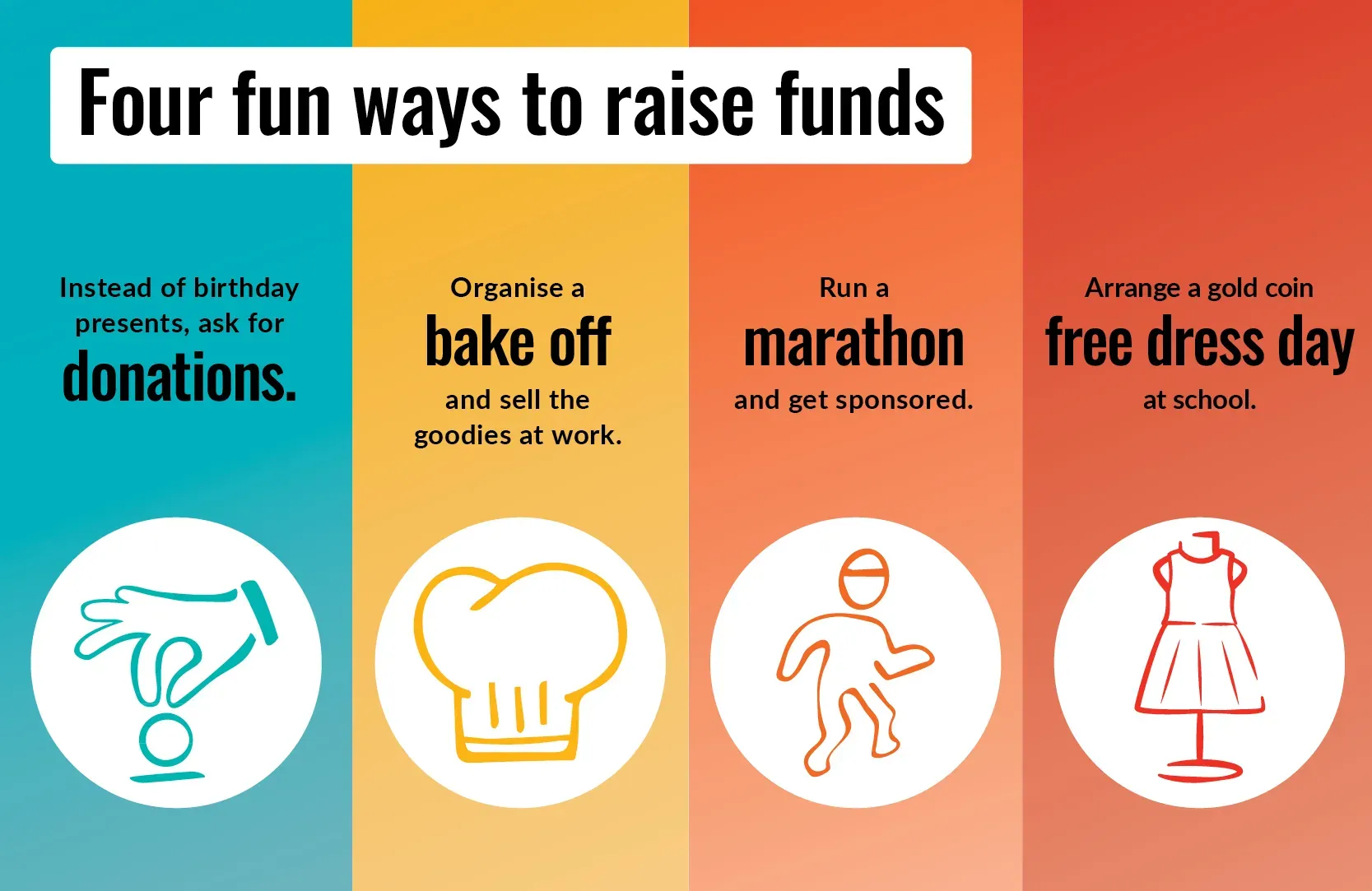Table of Contents
Let's be honest. Another bake sale? A car wash on a scorching Saturday? If your organization relies on the same tired tactics year after year, you're probably seeing diminishing returns and glazed-over eyes from potential donors. The world of philanthropy isn't standing still, and frankly, neither should your approach to asking for money. You need great fundraising ideas that cut through the noise, inspire genuine generosity, and actually deliver results beyond pocket change.
Why Your Current Fundraising Isn't Cutting It (And What Great Fundraising Ideas Look Like)

Why Your Current Fundraising Isn't Cutting It (And What Great Fundraising Ideas Look Like)
The Same Old Song and Dance
Let's cut to the chase. If your fundraising strategy still looks like a carbon copy of what you did five, ten, or even twenty years ago, that's probably why you're staring at flatlined donations. Think about it. How many times can you ask people to buy overpriced cookies or attend a silent auction with the same tired donated items? Donors, bless their hearts, are bombarded with requests daily. Your cause, no matter how noble, becomes just another ask in a sea of asks if you aren't offering something fresh, something that resonates *now*.
The landscape has changed. People are busy. Their attention spans are shorter than ever. Relying solely on physical events or mailed solicitations in 2025 feels a bit like trying to hail a horse-drawn carriage in Times Square. It's not just inefficient; it signals a lack of understanding about how people live and give today. You need to adapt, or you'll be left behind, watching other organizations snag the limited dollars available.
- Outdated methods feel impersonal.
- Donor fatigue is a real problem.
- Competition for attention is fierce.
- Traditional events can be costly with low ROI.
Donor Fatigue is Real, Folks
Remember the good old days when sending a heartfelt letter could reliably bring in checks? Simpler times. Now, donors are not only asked by your organization but also by every other cause they've ever supported, plus a dozen new ones popping up online. They see appeals on social media, in their email, on crowdfunding sites, and yes, still in the mail. This constant barrage leads to fatigue. They start tuning out.
Beyond the sheer volume of requests, donors are also savvier. They want transparency. They want to know exactly where their money is going and the impact it's making. A generic plea for funds just doesn't cut it anymore. They're looking for connection, for stories, for a tangible sense of contributing to something meaningful. If your fundraising efforts feel like a one-way transaction, you're missing a massive opportunity to build lasting relationships.
What Defines a Great Fundraising Idea?
So, if the old ways are fading, what does a *great* fundraising idea actually look like? It's more than just a novel event. A truly effective idea is strategic, engaging, and aligns with both your mission and your audience's interests. It provides value, either through an experience, a product, or a clear demonstration of impact.
Great fundraising ideas leverage technology without being overly complicated. They offer multiple ways for people to participate, recognizing that not everyone can attend an event or write a huge check. Crucially, they tell a story. They connect the donor's contribution directly to the positive change your organization creates. They leave people feeling good about giving, not just relieved they fulfilled an obligation. This is the kind of thinking that moves the needle.
TriedandTrue vs. Trendy: Great Fundraising Ideas for Any Cause

TriedandTrue vs. Trendy: Great Fundraising Ideas for Any Cause
The Classics: Are They Still Great Fundraising Ideas?
Alright, let's talk about the old faithfuls. The gala dinner, the silent auction, the charity run – these are the bedrock for many organizations. And look, they stuck around for a reason. They bring people together, create a sense of community, and provide a clear structure for asking for money. A well-executed gala can still raise significant funds, especially if you have a dedicated donor base who enjoys dressing up and bidding on things. Peer-to-peer events, like walks or runs, empower supporters to become fundraisers themselves, tapping into their networks. These aren't inherently bad great fundraising ideas; they just often need a serious refresh to feel relevant and exciting in today's world.
The trap is running the same event, the same way, year after year, expecting different results. Donors get bored. Volunteers burn out. Costs creep up. You need to inject new life into these traditional formats. Maybe it's a unique theme, integrating technology for bidding, or adding a compelling program that tells your story powerfully. Simply hosting "another auction" isn't enough; it needs to be *your* auction, memorable and clearly tied to impact. Ignoring these proven methods entirely would be foolish, but leaning on them exclusively without innovation is a recipe for stagnation.
- Tried-and-True Ideas:
- Gala Dinners (needs a modern twist)
- Silent/Live Auctions (integrate online bidding)
- Charity Runs/Walks (add virtual participation options)
- Direct Mail Campaigns (personalize and integrate with digital)
- Benefit Concerts (consider smaller, more intimate venues)
Riding the Wave: Trendy Great Fundraising Ideas
On the other side of the coin are the newer, trendier great fundraising ideas. Think online challenges that go viral, subscription models where donors give a small amount monthly for exclusive content, or cause marketing partnerships with companies that actually resonate with your audience (not just slapping a logo on something random). Virtual events, born out of necessity, proved they can reach a global audience with much lower overhead than physical gatherings. Crowdfunding platforms make it easy for anyone to start a campaign for your cause.
These methods often leverage the power of digital networks and offer convenience for donors. They can feel fresh and exciting, attracting a younger or different demographic than your traditional base. However, they require digital savvy, a strong online presence, and the ability to cut through the immense noise of the internet. Not every trend is right for every organization, and jumping on a bandwagon just because it's popular can backfire if it doesn't align with your mission or your audience's habits. A virtual reality immersive experience might sound cool, but if your donors are mostly over 70 and barely check email, it's probably not the move.
Leveraging Tech for Modern Great Fundraising Ideas

Leveraging Tech for Modern Great Fundraising Ideas
Going Digital or Getting Left Behind
Look, if your organization's online presence starts and ends with a static "Donate Here" button that looks like it was built in 1998, you're missing out on a massive chunk of potential donors. In today's world, people live online. They research causes, they connect with communities, and yes, they give money, often with just a few clicks on their phone. Ignoring digital tools isn't just old-fashioned; it's actively hindering your ability to find and engage supporters. Great fundraising ideas in the 21st century absolutely require a digital component, whether it's a slick online donation page, engaging social media campaigns, or targeted email appeals.
Think about it: when was the last time you wrote a physical check for anything other than your rent or maybe a very old-school vendor? Most transactions are digital now. Donors expect the same ease and convenience when supporting a cause. If they have to jump through hoops or fill out lengthy forms, they'll likely bounce. A smooth, secure online donation process is non-negotiable. It's the foundation for countless other great fundraising ideas you might explore.
Tools of the Trade: Beyond the Website Button
It's more than just a website, though. We're talking about leveraging platforms designed specifically for fundraising. Peer-to-peer platforms empower your supporters to run their own campaigns for you, tapping into their personal networks on social media – think birthday fundraisers or challenge events. Crowdfunding sites can help you raise money for specific projects, giving donors a tangible goal to contribute towards. Email marketing isn't dead; it's just evolved. Segmenting your lists and sending personalized, impactful stories directly to inboxes can yield impressive results. Social media isn't just for posting cute pictures; it's a powerful tool for storytelling, engagement, and driving traffic to those crucial donation pages.
Then there's data. Good tech helps you track who is giving, how much, and how they prefer to be contacted. This isn't Big Brother stuff; it's smart strategy. Understanding your donors allows you to tailor your appeals, thank them properly, and cultivate long-term relationships. It helps you identify your most loyal supporters and figure out what motivates different segments of your audience. Without this data, you're essentially flying blind, hoping your great fundraising ideas land with the right people by chance.
Tech Tool | How It Helps Great Fundraising Ideas |
|---|---|
Online Donation Platform | Makes giving easy, fast, and secure. |
Peer-to-Peer Software | Empowers supporters to fundraise for you via their networks. |
Email Marketing Platform | Allows for segmented, personalized communication and appeals. |
Social Media Management | Increases visibility, engagement, and directs traffic to donation sites. |
CRM (Donor Database) | Tracks donor data for better targeting and relationship building. |
Virtual Events and Hybrid Approaches
Remember when virtual events were just a temporary fix? Turns out, they're a legitimate and often highly effective component of modern fundraising. Hosting a virtual gala, a live-streamed concert, or an online auction can reach donors who live too far away to attend in person, or those who simply prefer the comfort of their own home. The overhead is often significantly lower than physical events, meaning more of the money raised goes directly to your mission. Plus, they offer creative ways to engage, from interactive Q&A sessions to virtual tours of your work in action. Hybrid events, combining in-person and virtual elements, offer the best of both worlds, expanding your reach while still providing that valuable face-to-face connection for those who can attend.
Making Your Great Fundraising Ideas Stick: Planning and Execution

Making Your Great Fundraising Ideas Stick: Planning and Execution
Ideas are Cheap, Execution is Everything
so you've brainstormed some potentially great fundraising ideas. Maybe you're thinking a virtual reality tour of your new facility, or perhaps a subscription box of locally sourced goodies tied to your mission. Great! But here's the harsh reality: an idea, no matter how brilliant, is just a thought bubble until you put in the gritty work of making it happen. This is where many organizations stumble. They have the vision but lack the detailed roadmap and the discipline to follow it. Planning isn't the glamorous part, but it's the absolute bedrock. You need clear goals – not just "raise money," but "raise $50,000 for the new literacy program by October 31st." You need a budget, and a realistic one, accounting for every potential cost, because unexpected expenses can sink even the most promising great fundraising ideas.
Who is doing what? By when? What metrics will you track to know if it's working *before* it's too late? Skipping these steps is like trying to build a house without blueprints. You might get walls up, but they'll probably be crooked, and the roof will leak. Laying out a detailed project plan, assigning responsibilities, and setting deadlines holds everyone accountable. It forces you to think through potential roadblocks and have contingency plans ready. This isn't bureaucracy; it's survival.
- Key Planning Elements:
- Define specific, measurable goals.
- Develop a realistic, detailed budget.
- Create a timeline with clear milestones.
- Assign roles and responsibilities.
- Identify necessary resources (staff, volunteers, tech).
- Plan your communication strategy (how will you tell people about this great fundraising idea?).
The Grind: Don't Just Launch, Manage
Launching your great fundraising idea is just the beginning. The real work comes in the execution phase. This means sticking to your timeline, managing your budget like a hawk, and troubleshooting problems as they inevitably arise. Did the online registration system glitch? Is a key volunteer MIA? You need a plan to handle these bumps quickly and efficiently. Communication is paramount during execution – keeping your team, volunteers, and early donors informed and engaged. Don't go silent after the launch; build momentum!
Measuring your progress against those initial goals is also non-negotiable. Are you on track to hit your target? If not, what adjustments need to be made? Maybe your social media campaign isn't converting, or your email open rates are abysmal. Data provides the feedback loop you need to pivot and improve. And finally, the follow-through: thanking donors promptly and demonstrating the impact of their contribution is crucial for retention and building long-term support. A great fundraising idea falls flat if donors feel like their money disappeared into a black hole. Show them the difference they made, and they'll be more likely to support your *next* great fundraising idea.
Beyond the Bucket: Making Your Fundraising Count
Stepping up your fundraising game requires more than just showing up. It means ditching the predictable, understanding what truly motivates people to give, and executing your chosen great fundraising ideas with precision. You've seen that the landscape offers plenty of options, from refining classic approaches to embracing digital frontiers. The key isn't just picking an idea; it's about aligning it with your mission, knowing your audience, and putting in the work to make it happen. Stop hoping for donations and start building a strategy that reliably funds the work you need to do.
